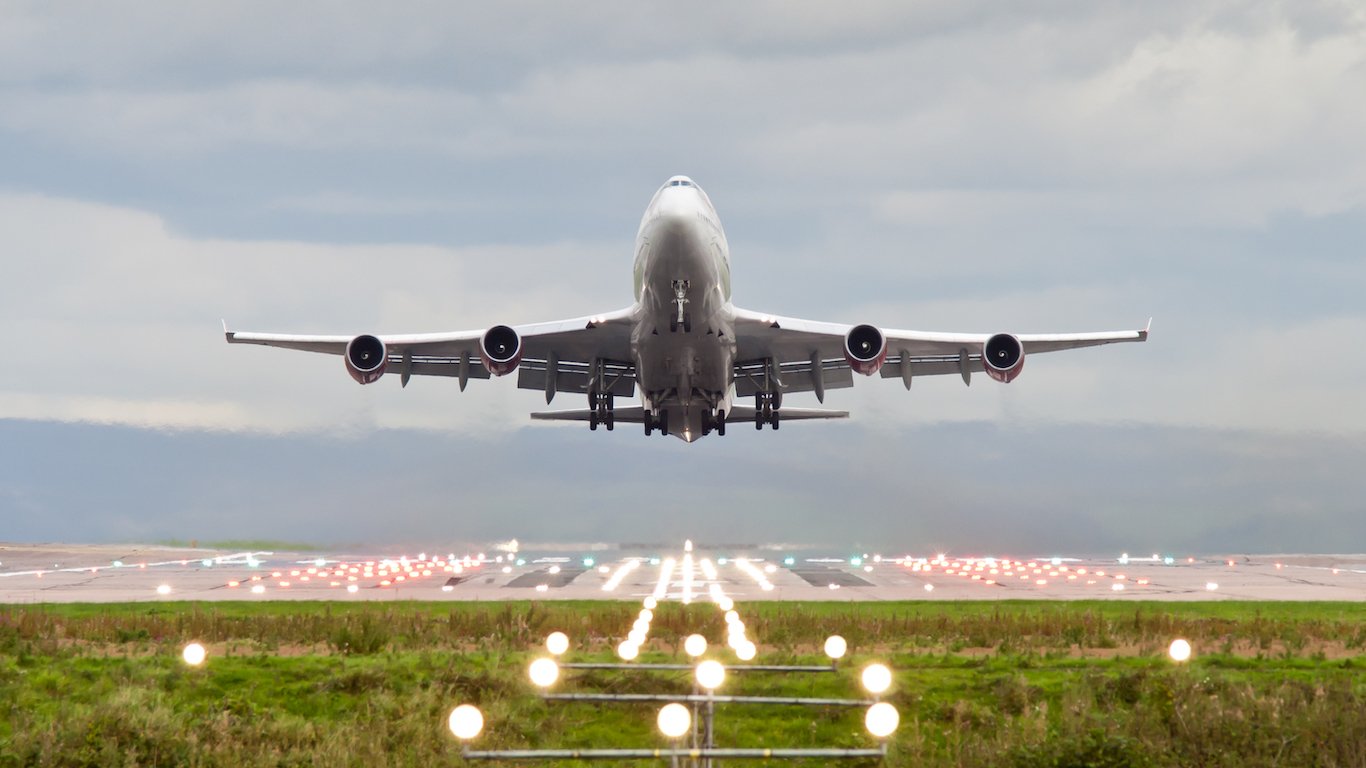

At $95 per barrel, Brent crude oil is at an all-time high this year. And just as it accelerated the inflation rate, rising oil prices thwarted recovery plans for airline companies. According to the Bureau of Transportation Statistics (BTS) fuel costs account for 15 – 20% of airline expenses.
As of March 2023, BTS noted a 71.7% rise in the cost per gallon of fuel since January 2019. Moreover, because the oil price is so variable, it makes airline stocks volatile and risky investments.
Since topping in July at $250, the S&P Supercomposite Airlines Industry Index dropped by nearly 24%. The index tracks the performance of the ten largest publicly traded US airlines, from United Airlines and JetBlue to Southwest and Delta Air.
Airline Profits Revised
Moving into 2024, earnings expectations have now fallen by 10%, according to Bloomberg Intelligence. By the end of 2023, estimates place average airline profits to drop by 8%. This is a complete reversal of prior expectations.
The Federal Aviation Administration (FAA) noted the highest post-lockdown daily air traffic in May. Combined with an average fuel cost per gallon lowering by 4% in Q2 compared to Q1, this increased optimism until July’s top.
American Airlines lowered its adjusted earnings per share (EPS) by 23 cents, now falling between 20 – 30 cent range. Per SEC filing, the company sharply revised its previous optimism of above 95 cents a share.
“Fuel prices have increased considerably since the Company’s initial Q3 guidance. The Company now expects to pay an average of between $2.90 and $3.0 per gallon of jet fuel in Q3.”
Similarly, Spirit Airlines lowered its Q3 revenue forecast last Wednesday, having raised fuel cost estimates from $2.80 to $3.06 per gallon. However, known as a discount airline, Spirit noted “heightened promotional activity with steep discounting for travel booked” as the compounding factor.
Over the last three months, American Airlines (AAL) plunged by nearly 18%, while Spirit Airlines (SAVE) took a modest hit of 8%. United Airlines is down 15% in the same period.
Labor Shortage as Another Headwind
In addition to rising fuel costs, airlines must deal with labor shortages. The International Civil Aviation Organization (ICAO) estimated that the aviation industry will need over 350,000 pilots and 480,000 new maintenance technicians by 2026.
Both lockdowns and mandates resulted in the displacement of 2.3 million jobs since 2019, according to Oxford Economics. In the fallout, this great disruption elevated job demand, increasing labor costs.
This means that labor unions have the upper hand. American Airlines had to approve a new contract with the Allied Pilots Association in August, retroactively paying $230 million in wages for the first four months of 2023. The contract also raised wages by 21%, increasing pilot compensation by 46% over the next four years.
This article originally appeared on The Tokenist
ALERT: Take This Retirement Quiz Now (Sponsored)
Take the quiz below to get matched with a financial advisor today.
Each advisor has been vetted by SmartAsset and is held to a fiduciary standard to act in your best interests.
Here’s how it works:
1. Answer SmartAsset advisor match quiz
2. Review your pre-screened matches at your leisure. Check out the advisors’ profiles.
3. Speak with advisors at no cost to you. Have an introductory call on the phone or introduction in person and choose whom to work with in the future
Take the retirement quiz right here.
Thank you for reading! Have some feedback for us?
Contact the 24/7 Wall St. editorial team.



